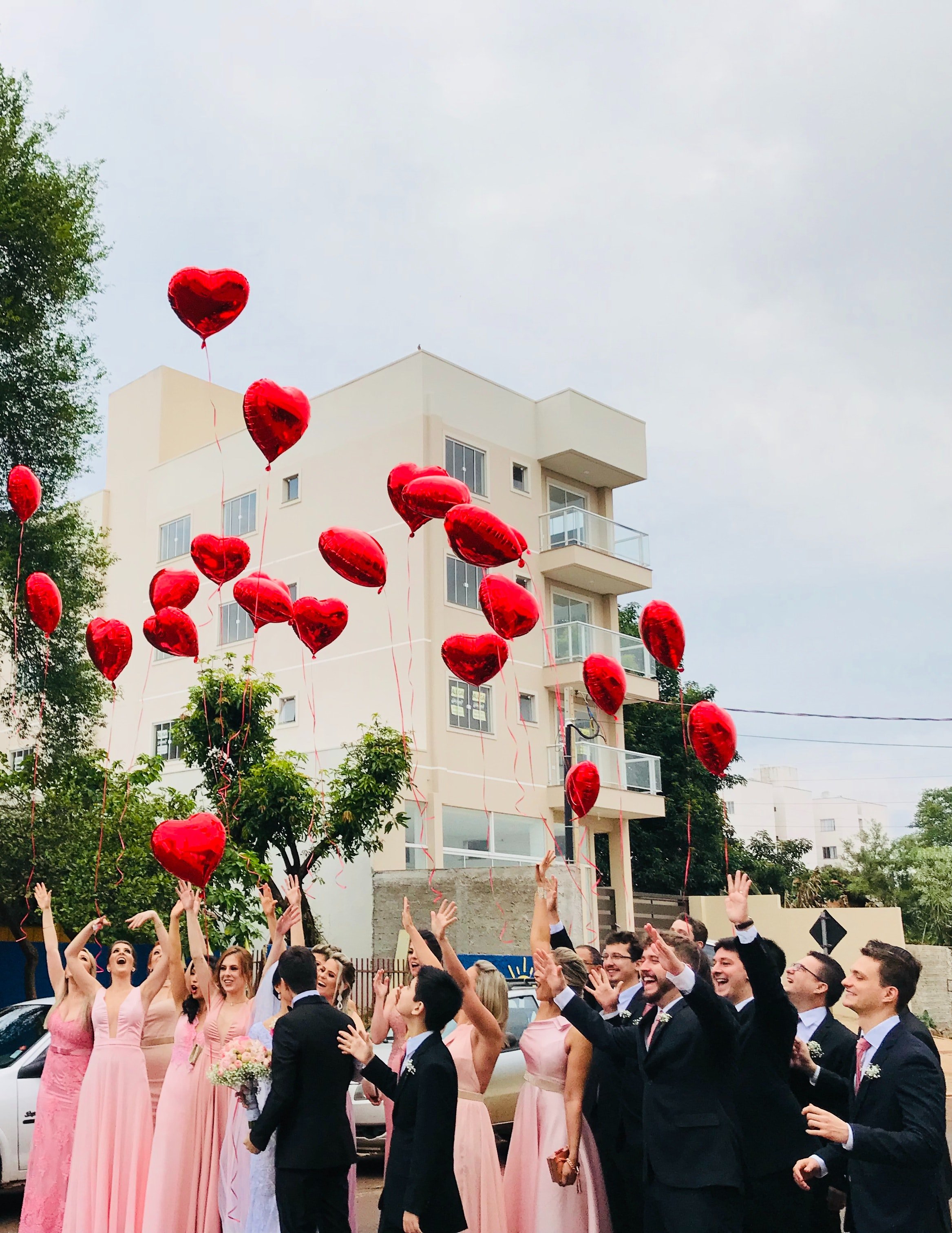Wedding Guide
Members of The Wedding
Bride and Groom
Decide budget and wedding plans.
Choose wedding party attendant. The bride helps her attendants in dress selection and the groom discusses appropriate attire with his best man and groomsmen.
Purchase small gifts for their attendants.
Acknowledge receipt of wedding gifts with a personal note of appreciation.
Bride
Discusses budget with fiance and parents.
Sets dates, time and place of wedding and reception.
Selects wedding dress and accessories, allowing a minimum of 3 months for delivery.
Books caterer, wedding and reception entertainment, florist and photographers, videographer and bakery.
Helps compile the guest list; chooses her attendants.
Orders invitations, thank-you notes and personal stationary.
Shops for trousseau.
Buys groom’s wedding band and arranges for engraving.
Groom
Discusses budget with fiance and parents.
Buys bride’s wedding band and arranges for engraving.
Gets the marriage license and obtains any other necessary legal documents.
Pays for and arranges honeymoon. Checks on available hotels for out-of-town guests.
Pays for bride’s bouquet, going-away corsage, and corsages for both mothers and close female relatives on both sides.
Supplies boutonnieres for himself and male attendants.
Maid/Matron of Honor
Usually someone very close to the bride: her sister or a dear friend or relative
Assists the bride in any way she can: helping plan the wedding, shopping, addressing invitations, taking charge of recording and displaying wedding gifts.
Lends the bride moral support.
Attends rehearsal and rehearsal dinner.
Pays for her own gown and accessories (not including flowers).
Supervises bridesmaids. Helps prepare them for their wedding day duties and organizes their fittings. Makes sure they arrive at the ceremony on time, confirms transportation arrangements.
Helps bride get ready before the ceremony and before departure from the reception.
Holds the groom’s ring during the ceremony until time to pass it to the bride.
Holds bride’s bouquet and arranges bridel veil and dress during the ceremony.
Is usually one of the two witnesses signing the marriage certificate.
Stands to the left of the groom in the receiving line, sits to the left of the groom at the honor table.
Best Man
Usually the groom’s best friend, brother, father or other close relative.
Assists the groom in any way he can.
Pays for his own wedding attire.
Oversees the ushers, making sure they are outfitted correctly and understand their duties.
Attends rehearsal and rehearsal dinner.
Holds bride’s wedding ring, producing it at the proper time in the ceremony.
Makes sure ceremony officiant is paid.
Sits to the right of the bride at the honor table; offers the first toast to the newlyweds; reads congratulatory messages.
Helps newlyweds prepare for the honeymoon departure. Assists groom into his going-away clothes, takes care of luggage, makes sure car is ready to go - hands over keys to groom or makes sure limousine is ready and sees that the groom has travel documents in order.
Makes sure that all men’s rental clothes are returned the first business day after the wedding.
Bridesmaid
A bridesmaid has no particular pre-wedding responsibilities, but might offer to help the bride in any way she can.
Pays for and assembles her wedding outfit.
Attends rehersal and rehearsal dinner. Walks in the processional and recessional.
May strand in the receiving line.
Junior Bridesmaid
Wears a dress similar to that of a bridesmaid, but in a simpler style.
Participates in the processional (recessional participation is optional).
Usher/Groomsman
Provides own wedding clothes (boutonnieres provided by the groom).
Seats guests at the church as they arrive - offers his right arm to each woman. Asks if they are friends of the bride or groom and seats them accordingly. Bride’s guests are seated to the left, the groom’s to the right; order is reversed in Jewish services. When one side has more guests than the other, the usher may begin seating guests on the side with fewer people.
Decorates the couple’s going away car.
Flower Girl
Usually a young girl between 4 and 10.
Carries a basket of posies, tiny nosegay or a basket of loose rose petals to strew in the bride’s path.
Ring Bearer
Usually a young boy between 4 and 10.
During the ceremony, he carries a white satin pillow with a fake ring tied or swen on. After the ceremony, the pillow is turned upside down so the dummy ring won’t show.
Candlelighter
In some parts of the country candlelighters participate in the wedding. Usually two boys, 9 to 14 years old, walk forward to light the candles at the altar just before the bride’s mother is seated.
Children should attend rehearsal to practicer their parts, although they do not normally attend any pre-weddig parties. After walking down the aisle, they might quietly slip into their parent’s peew to avoid disrupting the ceremony with fidgeting. They need not participate in the recessional.
Mother Of The Bride
Usually acts as hostess of the reception.
Helps the bride compile the guest list, arrange details of the ceremony and reception and may help her select her wedding outfit and trousseau.
Keeps the bride’s father and groom’s parents informed about the wedding plans.
Is accorded special honor at the wedding service and is seated last, just a few minutes before the wedding begins.
Greets guests at the head of the reception line. Sits in place of honor at the parent’s table.
Makes sure guests are having a good time and is on hand to bid them goodbye.
Father Of The Bride
Rides to the ceremony with the bride; chauffeured transportation suggested.
Escorts the bride down the aisle, then joins his wife in the front row.
As official host of the reception, he mingles with guests (he may or may not join the receiving line).
Keeps an eye on the bar and the champagne supply.
Makes a short toast at the reception.
Is the last person to leave the reception and say goodbye to the guests.
Traditionally pays for the majority of the wedding. It is now appropriate for other financial arrangements to be made.

